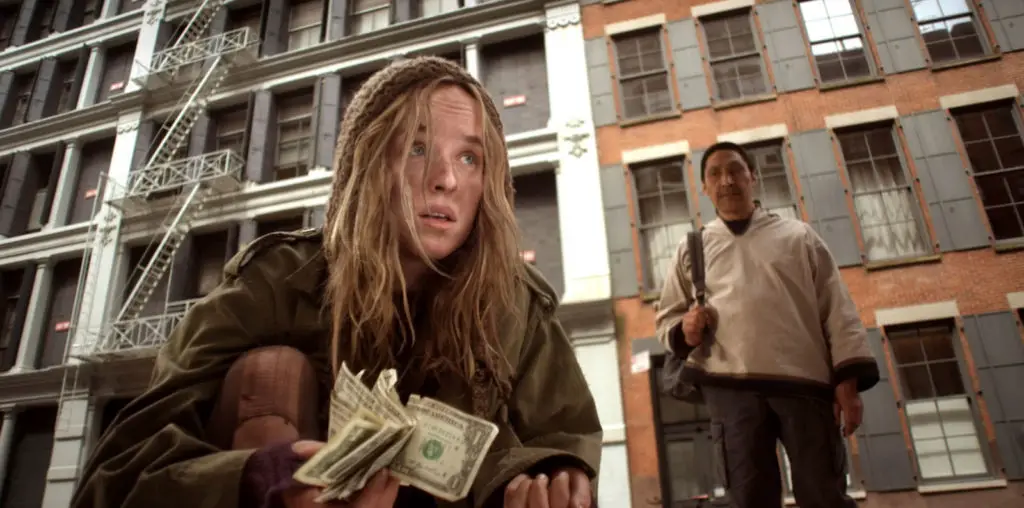
During the 1920s and early 1930s, Shlomo Shlep earned dual recognition for being among the most prominent rabbi in the American theological community and for being among the most popular grapplers in professional wrestling. Billed as the “rasslin’ rabbi,” Shlep won fans for his flamboyant theatrics and inventive wrestling maneuvers including the “Dreidel Spin,” the “Kick in the Knish” and the mystically-rooted “Kabbalah Krunch.”
The unique life and career of Rabbi Shlep was celebrated in John Ford’s 1934 biopic “Blood, Sweat and Canvas.” While widely regarded as a relatively minor biopic, in many ways this was among the most daring of Ford’s films: during the 1930s, there were precious few movies dealing with Jewish culture and professional wrestling, and the courage to combine the two subjects into a single film was a tribute to both Ford and his producer, the legendary Darryl F. Zanuck.
Some critics, however, claimed that Ford and Zanuck took too many liberties with the story Rabbi Shlep’s theological and athletic life. Even the staunchest supporter of these cinema icons must acknowledge their unusual decision to transfer the childhood portion of Rabbi Shlep’s tale from Romania to Ireland, and especially the leap of history in having the rabbi’s father depicted as being among the Irish patriots leading the Easter Uprising of 1916. In fairness, however, it should be noted that Barry Fitzgerald gave the performance of his life as Shamus O’Shlep, and no actor could ever match the glow of paternal pride in the scene when he introduces the young Shlomo (played by Freddie Bartholemew) to Eamon De Valera (played by Keye Luke) and the youngster nearly asphyxiates the celebrated Irish nationalist in a headlock.
Of course, “Blood, Sweat and Canvas” is best known today for its frenetic ringside sequences. The gym training sequences in which the adult Rabbi Shlep (played by Tor Johnson in a rare performance outside of Ed Wood flicks) lifts weights, jogs and bangs the punching bag puts the similar sequence from the original “Rocky” to shame. As for the fight scenes, this is without debate the zenith of sports filmmaking. Gregg Toland’s brilliant deep focus black-and-white cinematography turns the squared-circle into an artistic canvas as bright beams of light, clouds of cigarette smoke and rivulets of sweat mix into a platform of athletic madness which the audience can almost inhale and taste. Fans of the Coen Brothers may recall the shot of Rabbi Shlep’s arch-enemy The Marauding Methodist (played by Guinn “Big Boy” Williams) charging with outstretched hands and the chant “I will destroy him!” Rarely has a sports threat been depicted in films with such panache and feeling.
Sadly, “Blood, Sweat and Canvas” loses much of its speed and energy once the action switches from the wrestling arena to the synagogue. Tor Johnson is brilliant spinning his opponents above his head and tossing them head-first into the mat–and it is impossible not get goosebumps when he begins to recite the Kaddish prayer over a pinned foe. However, he never quite seemed at home in the non-wrestling scenes, especially when he is dissecting the intricacies of the Torah for an audience of admiring yeshiva students. Reportedly, it required 80 takes to film the Bar Mitzvah sequence when he delivers his brief sermon on the story of Joshua…and for years, many Catskills comics lovingly imitated Tor Johnson’s “Joshua make wall fall down” interpretation.
Also, too much time is also concentrated on the intrusive love triangle between Rabbi Shlep, his devoted wife Elaine (played by a young Frances Farmer at the start of her troubled career) and the glamourous Unitarian adventuress Lola (played by a mannered Louise Brooks at the tail end of her career). In real life, Lola attempted to seduce the good rabbi into the Protestant fold; but due to then-introduced Production Code, her subplot was abruptly changed to a storyline about getting the rabbi to invest his congregation’s funds in a Rhode Island gold mine. However, much of this distraction can be forgiven thanks to the priceless bit when the rabbi’s maid (played by Hattie McDaniel) “accidentally” tips a lighted menorah candle on Lola’s backside and sets her posterior ablaze. “I heard of the Burning Bush,” drawled the sublime Ms. McDaniel, “but she’s got a Burning Tush!”
Had more time been spent in the wrestling ring, “Blood, Sweat and Canvas” might have been a true classic. As it stands today, it is a noteworthy production with flashes of brilliance but an aching sense of lost potential.

